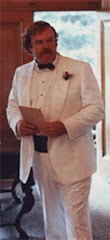Furious Improvisation: How the WPA and a Cast of Thousands Made High Art out of Desperate Times by Susan Quinn
A gift from H from her recent trip east, this is a gripping and important history of the Federal Theatre Project and its director Hallie Flanagan.. I read it with awe and sadness: awe at the work artists can do when they are in circumstances to devote their energies to it; sadness at how many in this country consider such activity frivolous and, yes, dangerous, so that in the end controversies gather the forces of ignorance to the attack, usually successful in the short term, on such "dangerous" activity.
Quinn makes an important point. At bottom, much of the hostility against the Federal Theatre Project was racist.
When opponents of the project got up to speak in the House and in the Senate, they might start off by talking about incompetence, or boondoggling, or communism, or immorality, but they wound up talking about race.
These opponents are the ancestors of the present Tea Party, who in turn have ancestors: racism goes back to our cultural origins and remains in play today far more than is admitted. A white Obama would not be as hated a target. So this is more than the history of a theater project. It's a cultural history at an important time in our history, a time suggestive of our own.
The great flood of 1937, one of the most devastating in the nation’s history, drove a million residents of the cities and towns along the Ohio and its tributaries out of their homes. One hundred and thirty people died. But the death toll would have been much higher had it not been for the speedy intervention of the federal government: By the second day of flooding, eighteen thousand WPA workers were on the job, rescuing thousands and ferrying them to safety in rowboats.
Compare to Katrina!
“It is the very essence of art,” she told a group gathered in Washington around this time, “that it exceed bounds, often including those of tradition, decorum, and that mysterious thing called taste. It is the essence of art that it shatter accepted patterns, advance into unknown territory, challenge the existing order. Art is highly explosive. To be worth its salt it must have in that salt a fair sprinkling of gunpowder.”
After it was all over, Hallie Flanagan wrote in the New York Times that the congressmen who went after the Federal Theatre were “afraid of the Project—but not for the reasons they mentioned on the floor of the Congress. They were afraid of the Federal Theatre because it was educating the people of its vast new audience to know more about government and politics and such vital issues of the day as housing, power, agriculture and labor. They were afraid, and rightly so, of thinking people.”
On a much smaller scale, we had our own example of subsidized theater here in Portland in Fall, 1978, when director Peter Fornara received a CETA grant for his theater company The Production Company and presented a remarkable season of four plays in daily rotation. I've written about this at length in my essay
Risk in Rep:
The four plays listed on the cover begin to tell the story: Cabaret, Marat/Sade, Joe Egg, American Buffalo. These four plays – a dark musical set in Nazis Germany, an even darker music drama set in an insane asylum, a disturbing family drama and a tough-edged story of street thugs – would make for a remarkable season at any time because they lack the variety typical of commercial theater selections. All these plays are serious. All have dark visions of human experience. Today a theater company might add one of them, even two, to its season – but four “heavy” plays in a row? Never! Then we turn over the program and look at the schedule. These plays are being performed not in succession but in rotation!
I feel blessed to have witnessed this season because such an offering is so rare in our culture. But again it showed what artists can accomplish when they can devote their energies to their crafts. Such theater artists can make audiences think even as they entertain them. And as this book suggests, herein is the rub. In America today, thinking is a dangerous occupation.










No comments:
Post a Comment